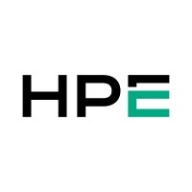

HPE Alletra dHCI and Azure Stack HCI are both key players in the hybrid cloud infrastructure market, each excelling in different areas. While HPE Alletra dHCI leads in customer support and pricing, Azure Stack HCI offers superior features, making it a wise choice for certain businesses.
Features: HPE Alletra dHCI provides robust storage capabilities, seamless data management, and high reliability suitable for enterprises. Azure Stack HCI integrates well with Microsoft’s ecosystem, offers advanced security features, and provides flexibility in hybrid cloud environments.
Room for Improvement: HPE Alletra dHCI could enhance integration options with external platforms, improve its initial setup time, and expand its range of customization features. Azure Stack HCI could benefit from a more straightforward deployment process, reduce its high initial setup costs, and improve the learning curve for users unfamiliar with Microsoft's environment.
Ease of Deployment and Customer Service: HPE Alletra dHCI offers straightforward deployment with exceptional customer service and support, ensuring a smoother integration process. Azure Stack HCI, though more complex to deploy, provides a broader range of customization options, appealing to businesses in need of tailored solutions.
Pricing and ROI: HPE Alletra dHCI presents competitive pricing with a strong ROI, especially for enterprises focusing on storage efficiency and quality support. Azure Stack HCI, despite a higher initial setup cost, offers substantial long-term value with its extended capabilities for businesses prioritizing advanced cloud strategies.
| Product | Market Share (%) |
|---|---|
| HPE Alletra dHCI | 4.0% |
| Azure Stack HCI | 3.2% |
| Other | 92.8% |
| Company Size | Count |
|---|---|
| Small Business | 4 |
| Midsize Enterprise | 1 |
| Large Enterprise | 3 |
| Company Size | Count |
|---|---|
| Small Business | 24 |
| Midsize Enterprise | 2 |
| Large Enterprise | 3 |
Azure Stack HCI efficiently integrates software-defined networking and Azure Kubernetes Service, offering a streamlined hybrid setup for VM management while maintaining top performance.
Azure Stack HCI enhances data center operations with high-end processors and storage, optimal Kubernetes support, and integration with Azure Arc and Azure Site Recovery. High application density in four-node configurations improves both time and infrastructure efficiency. Despite its strengths, the platform can improve in areas like software-defined networking, operational management, and simplifying deployments, which currently rely on PowerShell. Users often desire better training and integration with Microsoft Azure Portal, along with multi-cluster capabilities and storage architecture enhancements. Improvements in Hyper V virtualization are also needed to match competitors like VMware.
What are the key features of Azure Stack HCI?In sectors like government, Azure Stack HCI is crucial for running secure on-premise services with selectable Azure features to ensure data privacy. Businesses leverage the platform for VM creation, management, and monitoring through Windows Center, alongside Kubernetes production environments. Connectivity with Azure allows for smoother cloud transitions, appreciated for its dashboard manageability and substantial network capacity.
HPE Alletra dHCI, a data storage solution from Hewlett Packard Enterprise (HPE), offers Disaggregated Hyperconverged Infrastructure (dHCI), separating storage from compute resources for independent scaling and management. Utilizing HPE Nimble Storage technology, known for AI-driven optimization, it ensures high performance and management efficiency. With scalability and agility, users can effortlessly expand storage or processing power as data requirements evolve. Additionally, boasting rapid deployment in under 15 minutes and a claimed 99.9999% data availability, HPE Alletra dHCI promises robust and reliable storage solutions.
We monitor all HCI reviews to prevent fraudulent reviews and keep review quality high. We do not post reviews by company employees or direct competitors. We validate each review for authenticity via cross-reference with LinkedIn, and personal follow-up with the reviewer when necessary.